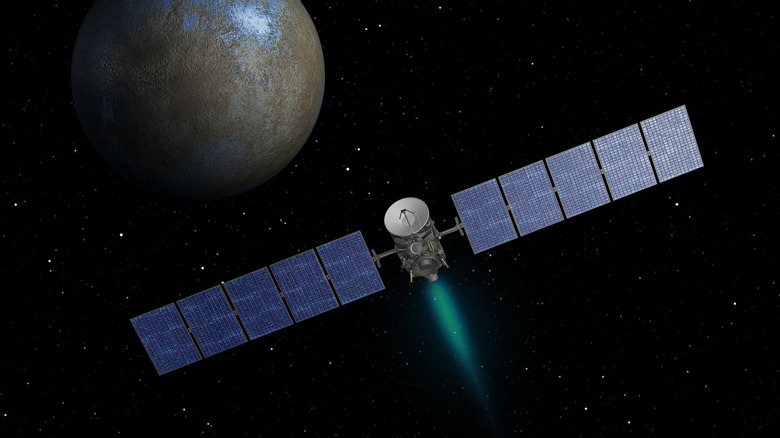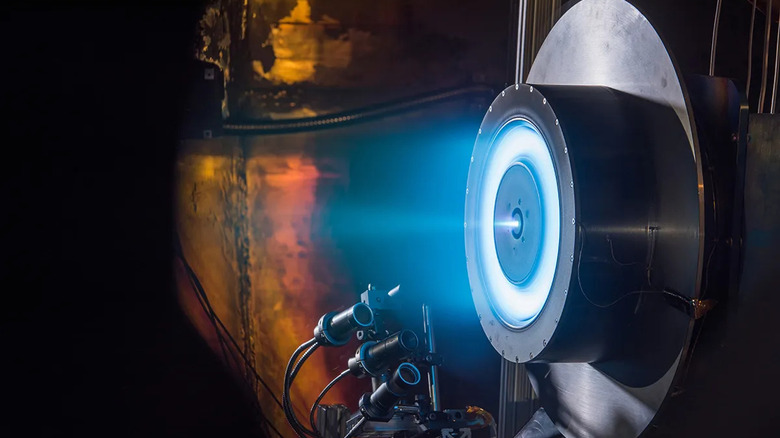Here's How NASA's Ion Thrusters Keep Satellites Flying
Earth's low orbit is filled with satellites — some new, some decades old. This has become an issue as orbit fills with space debris from broken or failed satellites, making removing them a challenge. These satellites face a never ending challenge: staying in orbit. Every satellite faces orbital decay, a small drag in orbit that causes the satellites to slow down over time. Eventually, this causes them to be destroyed as they crash through the atmosphere.
To combat this, satellites use thrusters to boost their orbits, moving just a little bit over time in order to avoid the drag. But what happens when those thrusters run out of fuel? Satellites cannot be launched with propellants that last for terribly long, as the fuel makes them big and heavy.
Things have changed in the past decade, with researchers testing different methods of propulsion. Take Orbion Space Technology, for example. They supply NASA with ion thrusters, and they are a game changer right out of a sci-fi movie.
How ion thrusters work
NASA's ion thrusters work through what is known as the Hall effect. Rather than use a chemical process to create propulsion, Hall-effecct ion thrusters use an electric field from solar panels to accelerate a propellant, usually xenon gas. This electric field limits the motion of electron plasma, and then uses those electrons to ionize the xenon, accelerating the ions to produce thrust and movement.
This process was first studied in the 1960s in both the USA and the Soviet Union,but it wasn't until 1998 that NASA first used the technology for use in satellites. Orbion Space Technology first started work on developing their own Hall-effect ion thrusters in 2016 with the help of NASA's Glenn Research Center. Since then, the company has sold their thrusters to both government and private sector entities like the Department of Defense, and also weather satellites for General Atomics.
According to NASA, this kind of propulsion is the key to the future of space travel. There are companies like SpinLaunch working on an orbital electric launch system to heavily reduce transport costs to orbit. These systems are also how NASA experts think we can successfully reach Mars, combined with nuclear electric propulsions. Sure, that is still a long way to go, but ion thrusters becoming more widespread gets us a step closer to joining NASA's Curiosity in exploring Mars.

